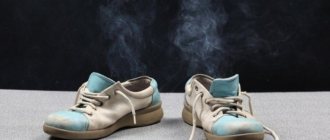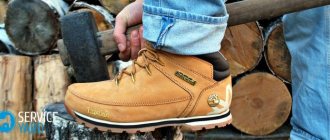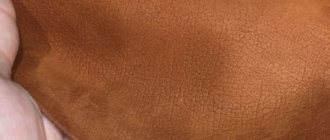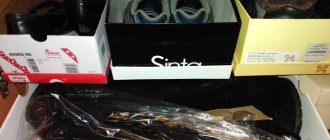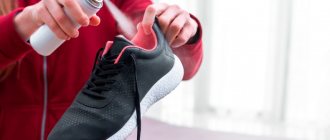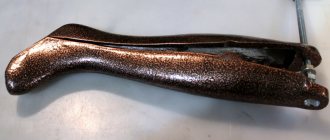Knowing how to prevent your winter and fall shoes from getting wet will help extend their lifespan and relieve the discomfort associated with wearing them. Firstly, it is worth assessing whether there are any flaws in the sole. Otherwise, dry thoroughly, avoiding direct contact with heating devices, then lubricate the surface with Aquabron, Salamander, Colonil or a warm family of waxes, fats and linseed oils.
In winter, even new shoes begin to get wet, so you will have to throw them away or restore the protective layer. To extend the life of your shoes, you need to correctly assess their condition, know how to wet your shoes and how to prepare the surface for treatment.
Preparatory measures
Before you start processing shoes, you need to prepare them well. This rule applies to the use of any means - both folk and store-bought.
The skin is thoroughly cleaned, if it is heavily soiled, washed and then dried. If you treat dirty shoes with impregnations, the effectiveness of the process will greatly decrease. Contaminants will not allow active substances to penetrate the structure of the leather or leatherette and will remain on the surface.
How to prepare boots for the season
After wearing shoes for a season, you will already know about the vulnerable spots. If you take care of them in advance, you can prevent the problem. The first thing to do is to inspect the boots for damage, cracks, integrity of seams, fittings:
- The slightly loose sole should be glued back. If the sole is too loose, then the pair of boots is sent to the workshop.
- Drying oil will help eliminate cracks and small holes. After applying it to the defects, the surface is thoroughly dried.
- If necessary, you should change the heels, strengthen the heel and heel.
- A thin, slippery sole can be strengthened by placing an overlay on it from a piece of high-quality rubber.
- Purchase a water-repellent nourishing leather cream and carefully apply it to the shoes, paying attention to the seams.
The easiest way
For moisture-proof treatment, products can be lubricated with ordinary petroleum jelly, which is sold in every pharmacy. Just take a soft cloth, apply a little cosmetic product to the surface and rub in well.
Afterwards, shoes should not be worn for several hours so that the Vaseline can be completely absorbed. This impregnation will last for several days.
Treating shoes with Vaseline
How to protect shoes from moisture: store-bought products
Type
It is advisable to purchase water-repellent products for shoes immediately along with a new pair, choosing them depending on the material of the product.
The functional nano series for caring for things from Hydrop is effective. It has a fairly extensive line, and you will definitely find the right product, albeit at a fairly high price. If you want to purchase professional shoe cosmetics of good quality, but at a lower cost, then select products from the company Timberland, Silver, Salton, Kiwi, Dividic.
Impregnation or cream
The cream is an excellent protection for shoes from water and dirt. It must be applied to the surface of the product using a special sponge. If you go on the road, then purchase an impregnation sponge for this, which fits in your purse.
Water-repellent impregnation is used for sneakers and shoes, boots and boots made of any material. Among the most popular means:
- universal impregnation Salamander;
- Damavik cream;
- Dividik smooth leather shoe polish.
- cream glitter Silver;
- cream with Salton applicator;
- Salton wax;
- clear Kiwi cream.
Important : if the shoes are new, then before applying impregnation you should first check its effect on an inconspicuous area in order to avoid a possible reaction of the factory protective coating of the products with the solvent contained in cosmetics.
Polish
To polish shoes with a special product, you will need a soft cloth and a brush. Thanks to this treatment, the boots will be protected from moisture and will additionally gain shine.
The choice of polishes is not as wide as creams, but you can pay attention, for example, to the following products:
- universal polish Sitil;
- shoe polish Lyra;
- Sapfir cream polish.
Sprays
Aerosols are most often used on suede and nubuck surfaces. You cannot apply regular cream to such shoes, but the spray will not damage the pile and protect the products from moisture. These products have positive reviews among consumers. The most popular:.
- Silver aerosol “Extra water protection”;
- aerosol cleaner Dividik;
- Vister universal water-repellent spray.
There are aerosols that restore the shade of shoes, making them look like new again after a quick treatment. Some of these tools have proven themselves well:
- aerosol paint Salamander “Wetter Schutz”;
- color restoring spray, Kiwi;
- Spray restorer for nubuck and suede with Silver brush;
- Salton “Expert” color brightness enhancer.
Another option for preventive treatment of shoes is antibacterial sprays, such as Silver deodorant, Kiwi refreshing deodorant spray, and Salton odor neutralizer. These drugs disinfect products from the inside and prevent the appearance of fungus.
This is interesting: the number one solution is the hydrophobic spray Hydrophop. The innovative product creates an invisible coating, thanks to which dirt and water are repelled from the surface, and the product remains clean and dry in any weather. The price of such a bottle is rather high, but it is justified by the effect it provides.
Shampoos and foams
These are special cosmetics designed to cleanse dirt, remove stains and stains. The foam is easily applied to the surface and can be removed with a brush after a couple of minutes. Try proven products from well-known companies:
- universal cleaning foam Silver “Premium”;
- Pro-Brite leather cleaner-conditioner;
- Salamander “Combi Proper” foam shampoo.
According to shoe material
Suede
This is a very soft and elastic leather made from the skins of elk, wild goats, deer or sheep. Shoes made of this material require more careful care than leather ones. There is a large selection of specialized products for suede. In addition to them, you need to purchase a special rubber brush and a hard sponge. If you just need to remove dust from the surface, spray the shoes with foam cleaner, remove it with a brush, and you can wear them again.
If you get caught in the rain, the first thing to do is let your shoes dry, and only then start cleaning them. Before going outside, treat your boots with a water-repellent spray that will protect them from getting wet and streaking.
Choose care products designed for suede, for example:
- impregnation from combined materials for all Dividik colors,
- Spray-paint restorer for nubuck and suede Silver “Specialist”,
- cleaner for all types of shoes Clear Shoes,
- water-repellent aerosol for Salamander velor and suede shoes.
Leather
An unpretentious and practical material that, with proper care, will serve you for many years.
Leather shoes should be cleaned at least twice a week. Upon arrival, the boots should be blotted with a rag, removing all dirt and water, and rubbed on top with a napkin.
Boots or shoes should dry naturally, and to prevent the items from losing their shape, you can stuff them with crumpled newspaper. The paper will perfectly absorb moisture and reduce drying time. After the pair has completely dried, apply cream to its surface and leave for several hours. After which you can polish the shoes with a brush and spray them with water-repellent spray.
There is a large selection of care products for leather, so try shoe cosmetics from different companies and use the one that suits you best. For example, popular:
- Cleaner-conditioner for smooth leather Pro-Brite,
- Salamander liquid cream,
- neutral cream in a Kiwi jar,
- Timberland shoe polish,
- Salamander deep cleaning spray,
- water-repellent and cleaning aerosol Collonil.
Advice : it is better to choose impregnations that contain fluorocarbon resins. Such products stay on the material longer, and it is enough to treat shoes once a week.
Candle wax for shoes
In autumn and spring, wax impregnation will come in handy. This coating will truly make the shoe material waterproof and prevent the shoes from getting wet. To work, you need to prepare a simple paraffin candle and a hair dryer.
The course of action will be as follows:
- They take the candle in their hand.
- Rub the surface of the shoes with wax, trying not to leave gaps.
- Difficult areas are processed several times.
- Rub the seams and joints even more thoroughly with a candle.
If everything is done correctly, the coating should be clearly visible on the surface. Then turn on the hairdryer, set the hot air function and warm up the boots well, turning them over on each side.
As a result, the wax will melt and be absorbed into the material, making it impermeable to moisture. If you don’t have a hairdryer, you can proceed in another way - melt the candle and immediately apply the already melted wax to the skin.
The effect of using wax is easy to evaluate. You need to pour water on the shoes: as a result, it will become noticeable that the liquid rolls off in drops, and the inner surface remains completely dry.
Important! This method is suitable for processing leather of any shade and even for fabric shoes. Afterwards, you can additionally clean the products with cream to provide them with a beautiful shine.
Candle wax - second method
There is a more labor-intensive, but highly effective way to make shoes and boots moisture-resistant. Operating procedure:
- Take candles and remove the wicks from them using pliers.
- Rub the wax on a fine grater, taking approximately 60 g of it.
- Melt the wax in a water bath.
- Add 80 g of rubber glue and 150 g of drying oil into the container directly to the wax.
- Without removing from the bath, the mixture is kneaded until completely homogeneous.
- Pour the finished shoe polish into a plastic jar or bottle and add another 80 g of turpentine.
- Screw the jar and shake it so that all the ingredients are well mixed.
Water bath for wax
Apply cream to shoes using a sponge or wool cloth. They are recommended to treat even the sole, which will increase its waterproof properties.
After applying the product, shoes should not be worn for 3 days - during this time they must be dried. Due to the risk of ignition, the finished impregnation should be stored in a safe place away from sources of fire and heating devices.
Causes of the problem
It happens that even the best quality shoes get wet. Sometimes this happens as a result of improper care or storage, and sometimes due to the fault of the manufacturer. There are many reasons why boots get wet, and here are the most common ones:
- Poor quality materials. To provide everyone with affordable shoes, manufacturers use cheap materials. Often such boots come apart, crack, the sole falls off, and the locks come apart. This is all due to poor quality assembly of the boots at the factory.
- The sole came off. With prolonged wear, the glued sole often does not stand up and comes off. This happens less often with stitched shoes. To make such a sole fall off, you need to try.
- Chemical exposure. In winter, chemicals are sprinkled on icy roads to make the ice disappear. Unfortunately, even the best quality boots “disappear” along with the ice.
- Synthetic materials. Leather substitute and dermantine crack due to moisture and low temperatures. Shoes become fragile and begin to let moisture through.
Drying oil and beeswax
To create another high-quality impregnation, use pure beeswax in an amount of 50 g. It is melted in a water bath, then 50 g of drying oil is poured into the mass, constantly stirring the composition.
The finished mixture is allowed to cool, poured into any container with a lid and stored in a cool place. Use the product as needed, applying with a sponge or rag. After treating boots or other shoes, heat the surface with a hairdryer so that the mixture better saturates the leather structure. Then the products are polished with a woolen cloth.
Sole defects and repairs
Many people are interested in the question of what to do if their shoes get wet. When shoes leak, you first need to check the sole, since often the cause of wet feet is associated with its damage or poor quality. If the sole has defects or is of poor quality, then in wet weather it is better not to risk your health by wearing such shoes for a walk. It is necessary to carefully inspect it, identify defects and take the following measures:
Sew or re-glue the sole if it has become unstuck. But since not everyone has such talents, it is better to seek help from the nearest shoemaker.- A defective sole with cracks or holes can be treated with drying oil. To do this, you need to sand the sole a little, then apply drying oil and leave to dry. You can also install soles in problem areas, but if you doubt your own abilities, entrust this task to a specialist.
- Poor-quality seams must be impregnated (coated) with any water-repellent cream or spray for waterproof shoes.
In order not to be tormented in the future by the question of how to protect your shoes from getting wet, carefully check the quality of the soles and seams when purchasing.
Paraffin and gasoline
If it is possible to treat shoes outdoors, you can use the following composition:
- Dry the pair well so that it is completely dry.
- Combine 1 teaspoon of finely grated paraffin and 100 ml of lighter gasoline.
- Shake the product until the wax dissolves, then apply it to the shoes with a cloth and leave overnight.
If the composition is poorly absorbed into the base, you can pre-treat the skin with hot air from a hairdryer, after which the impregnation will immediately penetrate into the structure of the material.
Important! You need to work with gasoline, strictly observing all safety precautions!
If your shoes are wet
If you do get your shoes wet, you need to dry them thoroughly. At the same time, you should not place suede or leather products on the radiator or near heating devices. They shorten the life of products, which then crack and become deformed.
Shoes should be dried at room temperature under natural conditions. After complete drying, the shoes are treated with cream or spray.
Insoles from wet shoes are removed and dried separately. It is better to have at least two pairs of boots, boots and shoes for each season, so that wet shoes have time to completely dry and soak.
To speed up the drying process, place crumpled newspapers without illustrations or photographs or light paper inside each shoe or boot. When newspapers become wet, replace them with dry ones. For more information on how to properly dry shoes, see the link.
Oil impregnation
A good shoe polish is made from castor oil, which is sold in pharmacies. It literally repels water and prevents it from wetting the shoe material. In addition, castor oil cannot spoil either leather or leatherette; it can be used to treat seams and joints without harm to the products.
You can use castor oil in its pure form, but it is even more effective to prepare the following composition based on it:
- Melt 1 teaspoon of paraffin in a water bath.
- Add 2 teaspoons of castor oil and linseed oil into the bowl.
- Mix the whole mixture well and apply it to the shoes while still warm.
You should not use too much of the product - it can clog the pores, causing the shoes to become rougher. You can wear a pair 8 hours after soaking.
Suede and leather care
Low-quality leather allows moisture to pass through quite quickly, so figure out how to soak your shoes from getting wet so that they don’t wear out and your feet are dry.
Leather
Shoe care can be carried out using special water-repellent compounds for any materials. There are plenty of these funds on the market, and it will be easiest to use them. For leather, impregnation in the form of a spray, special cream or wax is suitable. It should be borne in mind that emulsion cream will not protect against moisture, so you need to choose an organic product with a high content of oils, waxes and fat.
You can use folk remedies that will protect your leather shoes from getting wet.
Instead of cream, castor oil is used to treat skin and seams.
Tips for using impregnations
It is convenient to use old toothbrushes to clean shoes before soaking. They will help remove all dirt from seams and hard-to-reach areas. Consequently, the quality of moisture-proof treatment will be higher. If the shoes are heavily soiled, wipe the shoes with a sponge and a solution of laundry soap, then rinse with water and dry.
Cleaning shoes with a toothbrush
Regardless of the type of impregnation and its composition, you can pre-heat your shoes with a hairdryer. This way the product will be absorbed into the skin faster and will not appear on the surface.
Advice! Typically, homemade wax-based impregnating compounds are applied in a thick layer. Don't be afraid that white stains remain on the surface - you can also walk over them with hot air from a hairdryer, and the excess composition will disappear.
There is no need to go outside immediately after treating your shoes. It is better to leave it to dry overnight, or not to touch it for at least several hours. As the composition wears off, a new portion is applied.
Self-made impregnations will save money and extend the life of shoes, and will also help to always keep your feet warm and dry!
Useful tips
- Always wash and clean your shoes after coming in from outside.
- Fat cream is used for rough boots made of thick leather. For more elegant products, sprays and emulsions should be used.
- Before storing, lubricate boots or boots with a care product or vegetable oil. This will help the leather retain moisture and not crack.
- If you have treated your boots with the product and they still get wet, you should contact a repair shop. Perhaps there is a crack or hole somewhere, or moisture is penetrating through the sole.
- If you recently purchased shoes and they are already getting wet, you have every right to return them to the store. To do this, be sure to keep your receipt.
Prepare your first pair for winter with the help of simple tips and specialists from a shoe workshop:
- We evaluate the integrity of the sole, seams, leather and accessories.
- We wash and clean the surface.
- We change heels (if necessary) and strengthen the heels.
- We sew (strengthen) the seams.
- Reinforce (if necessary) the sole. This preventive measure will help compact the sole, protect it from rapid abrasion and provide anti-slip properties. It is important to ensure that the master uses only high-quality material that will be resistant to reagents and frost. For example, wear-resistant rubber or polyurethane. Such a budget option as resit (note – and microporous rubber) should be abandoned.
You can also...
- Impregnate poor-quality seams with a special agent with water-repellent properties. True, this manipulation will have to be repeated periodically.
- Dry the cracks and holes (note - sand the surface, and then apply drying oil and wait for it to dry).
- Install outsoles (rolling) on top of your sole if you do not want to change it completely.
- Buy fat-containing (nutrient) products for leather shoes. They will restore elasticity to the boots and prevent cracking.
- Buy creams/aerosols based on beeswax for patent leather shoes.
- Find special products for shoes with breathable membranes. Such products will enhance the water-repellent effect and support pore breathing.
The best water-repellent impregnations for economy class shoes
Such products are used to protect work shoes when performing outdoor activities. This allows you to keep your boots dry all day long and protects your feet from hypothermia.
Futon Universal 230 ml - the most economical option
This is the best water-repellent impregnation for shoes due to the cost from 70 to 120 rubles. The product is available in 230 ml containers and comes in orange and yellow-blue can design options.
The substance acts for 24 hours, protecting the treated surface from absorbing water and helping to remove dirt. In addition, a white streak of salt cannot form on leather and suede after a long stay in snow or rain.
Pros:
- extends the life of leather shoes;
- helps disguise scratches;
- helps maintain the shape and geometry of the boot;
- cost from 70 rubles;
- adds additional shine to the surface;
- goes well with leather and suede;
- waterproof effect;
- has a quality certificate and a declaration of conformity;
- suitable for subsequent polishing;
- shelf life 3 years.
Minuses:
- small capacity of 230 ml will quickly run out with everyday use;
- Daily cleaning of the surface will be required before use for maximum effect;
- needs to dry for 20-30 minutes;
- dangerous for the respiratory system;
- not suitable for textile materials;
- cannot be used on patent leather.
SILVER PREMIUM 250 ml - convenient set with brush
This is the best water-repellent impregnation for shoes in terms of ease of use, since it is equipped with two mini brushes that help to evenly distribute the product over the surface and rub it into the product.
The Turkish manufacturer periodically makes promotions and produces impregnation not in 250 ml, but with an additional 20%.
Pros:
- one brush at the end of the lid for distributing the applied product, and the second for rubbing on the side;
- cost from 190 rubles;
- colorless spray suitable for shoes of any shade;
- dries in 15-20 minutes;
- cleans the surface and repels water;
- masks scratches;
- Suitable for suede, nubuck and leather;
- does not leave streaks;
- maintains existing color.
Minuses:
- has a specific pungent odor;
- The dispenser is equipped with a large diameter hole, which gives increased flow.
Details
How to make shoes waterproof at home
If you wear boots for one season, then you yourself will be aware of all its vulnerabilities. But you can prevent possible difficulties by simply taking care of them in advance. Initially, you should inspect a pair of shoes for cracks, damage, integrity of seams, fittings:
- If the sole has come off a little, then it needs to be glued. If the sole has come off significantly, then it is better to take the shoes to a workshop for repair.
- Small holes and cracks can be repaired using drying oil. After applying it, the waterproof boots must now be thoroughly dried.
- If this is necessary, then you need to replace the heels, strengthen the heel and heel.
- If the sole is thin, then it can be strengthened with an overlay made from a piece of good rubber.
- Buy a nourishing shoe cream with a water-repellent effect and apply it liberally to the shoes, especially in the seam area.
How to make suede shoes waterproof using special products
Shoe stores sell a wide variety of products that protect shoes from getting wet. Some manufacturers supplement the box with a pair of shoes with a spray or cream recommended for this product. In this case, you need to remember the name and subsequently buy only that one.
Spray
If your boots start to get wet, then sprays with a water-repellent effect will help solve the problem. It is necessary to treat shoes with it before each exit from the house. The spray helps to reliably protect shoes from moisture, preventing it from penetrating inside.
The best means in aerosol form are the following:
— Salamander;
— Kiwi Aqua Stop;
— Ecco;
— Collonil Nanopro.
Each brand has different products for different shoe materials. There are various options suitable for genuine leather, suede, textiles, leatherette, velor, nubuck.
REFERENCE! Silicone sprays can only be used on smooth skin. For everyone else, you need to choose products containing fluoride.
Cream
Products in the form of a rich cream nourish the surface well, caring for it and creating a protective layer that prevents getting wet.
The most popular products are impregnation creams of the following brands:
— Salamander;
— SMS Olvist;
- Grangers G-Wax.
They contain beeswax, lipids and other components containing fats. The cream prevents boots from getting wet, and also gives them shine, removes signs of wear and paints over scuffs.
To get the best effect, you need to treat your boots every day. This is due to the fact that impregnations with silicone or wax are quickly washed off, especially in rainy, humid weather. If you do everything correctly, you will have waterproof shoes.
Wax
Wax is an excellent way to treat shoes so that they do not get wet. But it is only suitable for varnished or leather surfaces. There are different types of wax:
- bee;
— extraction;
- pressed;
- bleached.
Beeswax is used to obtain a soft, delicate product. Bleached wax is used for hard, rough skin. Coloring agents are added to this wax, so it is an excellent substitute for shoe polish.
Usually wax is used if you need to heal a pair of shoes with creases and cracks. Wax softens these areas, making them more invisible.
Natural brushes or a medium-hard sponge can help you apply the wax correctly. Instructions:
- Wash and dry shoes.
- Use a brush to scoop out a little product.
- Rub the wax into the material using circular movements, starting from the sock.
REFERENCE! After you finish rubbing the wax into your shoes, you need to warm it up with a hairdryer so that the product penetrates deep into the skin.
Folk remedies
Mixtures prepared at home are in no way inferior to store-bought ones. They are able to make shoes waterproof and protect them from moisture. The main ingredient of the homemade mixture is fat of vegetable or animal origin. In addition, Vaseline or paraffin can be used.
Salo
The easiest way to protect shoes from moisture is lamb or lard. But you can’t just take a piece of lard and spread it on your boots; you need to prepare a mixture from it.
Recipe number 1:
- lard - 70 g;
— flax oil — 70 g;
— castor oil — 15 g.
The fat needs to be melted if it is hard, then add oil and castor oil to it. Cool the resulting product a little and rub your shoes with it so that the mixture penetrates deep into the skin.
Recipe number 2:
- lard - 75 g;
— flax oil — 75 g;
— turpentine — 15 g.
REFERENCE! Prepare and apply the product according to the second recipe in the same way as the first.
Goose fat
Goose fat can be a great help if your boots get wet. It is necessary to protect the feathers of waterfowl from moisture, which means it will also be very useful for shoes. To prepare you need to use the following ingredients:
— fat — 3/4;
- granulated wax - 1/3;
- castor oil - 1/3.
Solid ingredients need to be melted over a fire and then castor oil added. The surface of the boots needs to be heated with a hairdryer, and then rubbed in the hot mixture with a sponge. In such shoes, your feet will not get wet for a long time, because the fat remains in the skin for a long time.
Petrolatum
Vaseline from the pharmacy is a budget and universal product with a water-repellent effect. In order for Vaseline to prevent the inside of your boots from getting wet, you need to apply it correctly. For this:
- Wash your boots thoroughly and dry them.
- Distribute Vaseline evenly over the boots, not forgetting the seams.
- Heat the shoes with a hairdryer so that the product melts and clogs all the cracks and pores.
- The top of the shoes should be wiped with a soft cloth and put in a warm place to dry.
- After some time, the Vaseline will harden, and an invisible protective film will form on the surface of the shoes, which will not allow water to pass through, which means that your feet in such shoes will not get wet.
Paraffin
Paraffin wax can help protect your shoes from getting wet. The easiest way is to take a regular candle and thoroughly rub the surface of your shoes with it. A more complex but effective method is to melt the paraffin in a water bath and use a sponge to rub it into the surface of the shoe.
A mixture of wax and linseed oil
The resulting wax products with a water-repellent effect are no different from the store-bought counterpart. To prepare the mixture, you will need 100 grams of wax and 20 grams of linseed oil.
Granulated wax or an ordinary candle is broken into pieces and then melted on the stove. Add oil to the resulting liquid and stir until smooth. The prepared product is applied to the top of the product, rubbing thoroughly.
REFERENCE! After the product hardens, a protective film forms on the surface, and the shoes will not get wet for a long time.
A mixture of fat and castor oil
The easiest to prepare are anti-wetting products made from fat and castor oil. To do this, you need to mix castor oil in equal proportions with any solid fat. This can be pork and lamb lard, goose fat, paraffin or wax.
The solid ingredient must be melted in a saucepan or in a water bath, and then castor oil must be added to it and mixed until a homogeneous composition is obtained. While still hot, the product is rubbed into the skin and dried.
Recipe with glycerin and fish oil
Fish oil can help protect your boots from getting wet. To do this you need to mix the following components:
— fish oil — 60 g;
— glycerin — 30 g;
— turpentine — 45 g;
— wax — 12 g.
Melt a wax candle or beeswax and add fat, turpentine and glycerin to this liquid. The still hot mixture is rubbed into the surface of the shoes and then left overnight.
Why do shoes get wet?
There may be several reasons:
- shoes are made of fabric materials that allow moisture to pass through;
- moisture penetrates through the seams and joints of the sole and upper;
- the shoes are cracked and no longer waterproof;
- the sole gets wet - it is poorly stitched, worn out, cracked or damaged in some other way.
It is easy to determine that the sole is to blame for shoe leaks. In this case, the feet or toes will be wet, but the top of the foot will be dry.
Types of protective equipment
Today, foreign and domestic manufacturers offer consumers hundreds of water-repellent products. Users are assured of the special effectiveness of their products. It is necessary to understand: what the product is intended for, what its composition is and the conditions of use.
Water-repellent agents are produced in the form of: thick or liquid ointments; emulsions; spray. For shoes made from genuine leather, thick cream is used. It is applied in cold weather. The composition includes: animal fat; solvent; dye; wax When treated with cream, a water-repellent film is created on the surface.
In the warm season, emulsion or liquid cream is used to lubricate shoes. Such products are not very suitable for fully protecting shoes from moisture, only for creating a beautiful look and shine. Moisture protection spray lasts longer and is suitable for most materials. Water-repellent aerosol is used in the treatment of clothing and shoes.
Today, the best water-repellent agents are impregnations. They differ in composition. Impregnations reliably protect shoes and clothing, penetrating deeply into the material. For any smooth surfaces and leather products, an impregnation containing silicone is used.
For fleecy materials, nubuck and suede, a product with fluorocarbon resin is suitable. For other materials, water repellents containing fluorine are used. There are universal products that are suitable for all types of material.
Preventive measures
There is no better treatment than prevention. Treat a new pair with a protective agent three times every 24 hours, and thoroughly clean the old pair of dirt and dry it before spraying. If the skin is soft and thin, use sprays, oils, and treat the berets and tarpaulin with a rich nourishing cream. Sprays will not make shoes waterproof if they are made of rough leather.
The meaning of protective agents is impregnation. You have applied enough cream or spray if it stops being absorbed. Leave your shoes to dry overnight. Then you will be sure that things will last a long time, and puddles will only appear on the street. Those who prefer to use creams should choose those that are 40% fat.
How do you like the article?

